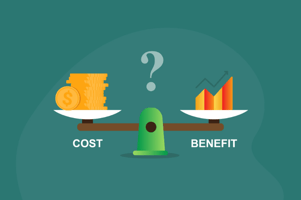In the rapidly evolving digital landscape of 2024, the economics of Content Delivery Networks...
The Economics of Video Streaming CDNs: Cost-Saving Approaches 2024
The Economics of Video Streaming Content Delivery Networks (CDNs) has evolved significantly, offering cost-saving approaches that are increasingly relevant in 2024. These methods not only reduce the financial burden on streaming businesses but also enhance viewer experience through improved efficiency and reliability of content delivery.
Cost-Saving Approaches for Video Streaming CDNs:
1. Resource Sharing and Reduced Capital Expenditure: CDNs operate on a shared resource model, allowing multiple content providers to leverage the same infrastructure. This approach minimizes the need for individual companies to invest in dedicated infrastructure, shifting from capital-intensive investments to operational expenditures. As businesses grow, they benefit from the "pay-as-you-grow" model, paying only for the bandwidth and resources they consume, which aligns costs directly with their revenue generation and audience expansion efforts.
2. Improved Resource Utilization: By distributing video content across a network of geographically dispersed servers, CDNs ensure efficient server usage and real-time resource allocation. This not only prevents server overloads but also guarantees optimal resource allocation according to current demand, ensuring scalability and flexibility in response to audience fluctuations.
3. Affordable Global Delivery: A robust CDN infrastructure facilitates affordable global delivery, enabling content providers to reach worldwide audiences without incurring prohibitive costs. By minimizing data transit distances through local points of presence (PoPs) and optimizing data routes, CDNs significantly reduce latency and transit costs, making global expansion more feasible for streaming businesses.
4. Efficient Traffic Management: Advanced traffic management capabilities of CDNs, such as dynamic routing and adaptive bitrate streaming, optimize bandwidth usage and improve content delivery reliability. These technologies ensure that viewers receive the best possible video quality based on their internet connection, enhancing the overall viewer experience while managing operational costs effectively.
5. Sustainability and Energy Efficiency: The streaming industry has made strides in reducing power consumption and energy costs through the adoption of IP-based media delivery devices and infrastructure optimization. Transitioning from traditional DVRs to more energy-efficient IP devices has resulted in significant savings, both in terms of power consumption and associated energy costs. Moreover, the industry continues to explore ways to further reduce energy usage across the delivery ecosystem, emphasizing the need for sustainable practices in streaming media delivery.
These cost-saving strategies underscore the importance of CDNs in the streaming industry, offering a balance between cost efficiency, quality of service, and global reach. As the demand for video content continues to grow, leveraging these approaches can help streaming businesses maintain competitive edge while managing operational costs and expanding their audience base globally.
Cost-Saving Approaches for Video Streaming CDNs:
1. Resource Sharing and Reduced Capital Expenditure: CDNs operate on a shared resource model, allowing multiple content providers to leverage the same infrastructure. This approach minimizes the need for individual companies to invest in dedicated infrastructure, shifting from capital-intensive investments to operational expenditures. As businesses grow, they benefit from the "pay-as-you-grow" model, paying only for the bandwidth and resources they consume, which aligns costs directly with their revenue generation and audience expansion efforts.
2. Improved Resource Utilization: By distributing video content across a network of geographically dispersed servers, CDNs ensure efficient server usage and real-time resource allocation. This not only prevents server overloads but also guarantees optimal resource allocation according to current demand, ensuring scalability and flexibility in response to audience fluctuations.
3. Affordable Global Delivery: A robust CDN infrastructure facilitates affordable global delivery, enabling content providers to reach worldwide audiences without incurring prohibitive costs. By minimizing data transit distances through local points of presence (PoPs) and optimizing data routes, CDNs significantly reduce latency and transit costs, making global expansion more feasible for streaming businesses.
4. Efficient Traffic Management: Advanced traffic management capabilities of CDNs, such as dynamic routing and adaptive bitrate streaming, optimize bandwidth usage and improve content delivery reliability. These technologies ensure that viewers receive the best possible video quality based on their internet connection, enhancing the overall viewer experience while managing operational costs effectively.
5. Sustainability and Energy Efficiency: The streaming industry has made strides in reducing power consumption and energy costs through the adoption of IP-based media delivery devices and infrastructure optimization. Transitioning from traditional DVRs to more energy-efficient IP devices has resulted in significant savings, both in terms of power consumption and associated energy costs. Moreover, the industry continues to explore ways to further reduce energy usage across the delivery ecosystem, emphasizing the need for sustainable practices in streaming media delivery.
These cost-saving strategies underscore the importance of CDNs in the streaming industry, offering a balance between cost efficiency, quality of service, and global reach. As the demand for video content continues to grow, leveraging these approaches can help streaming businesses maintain competitive edge while managing operational costs and expanding their audience base globally.


